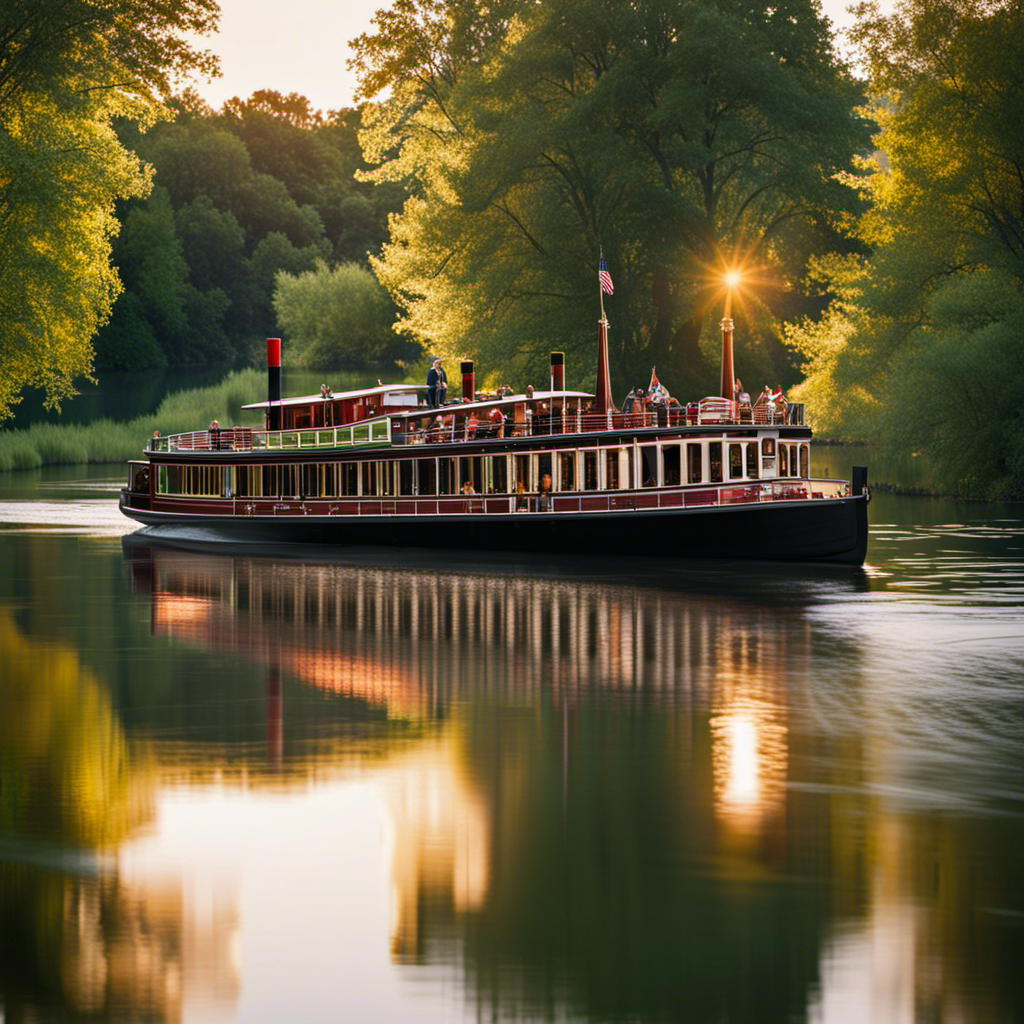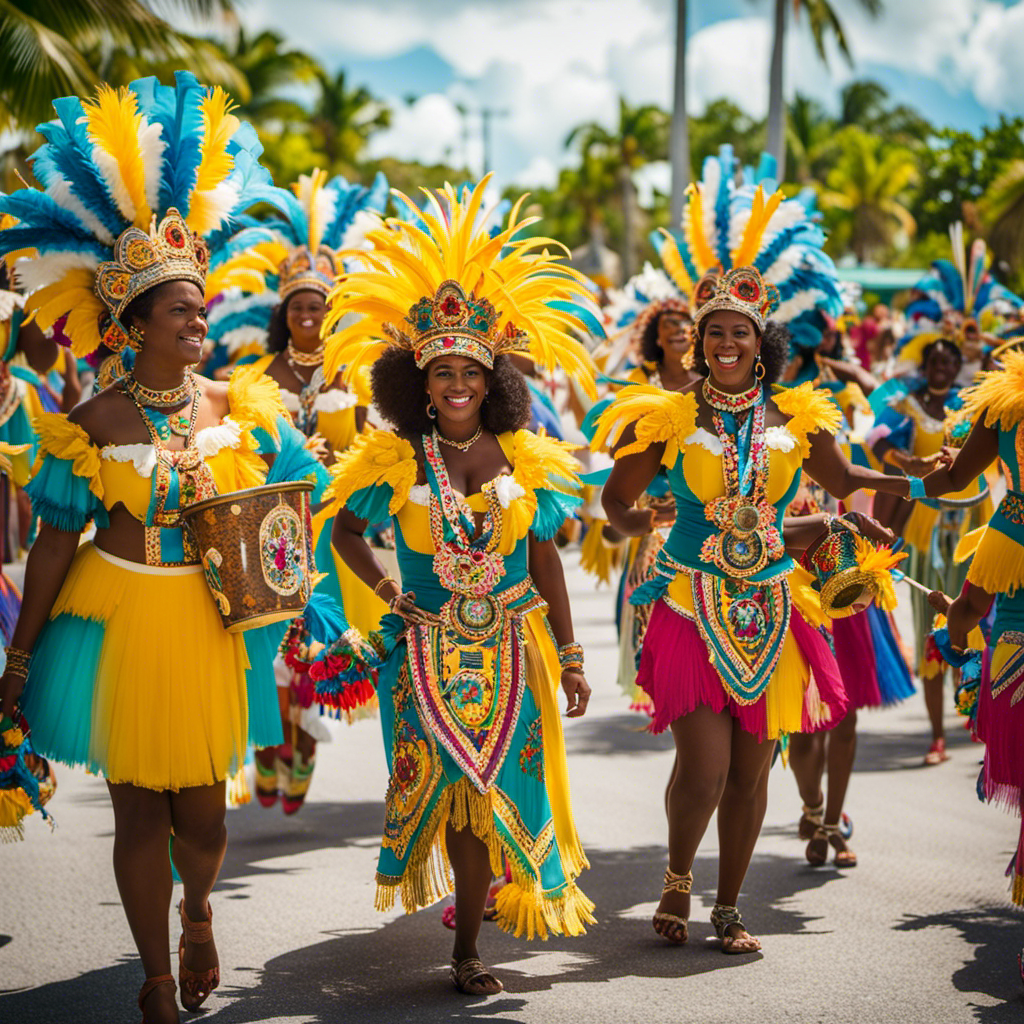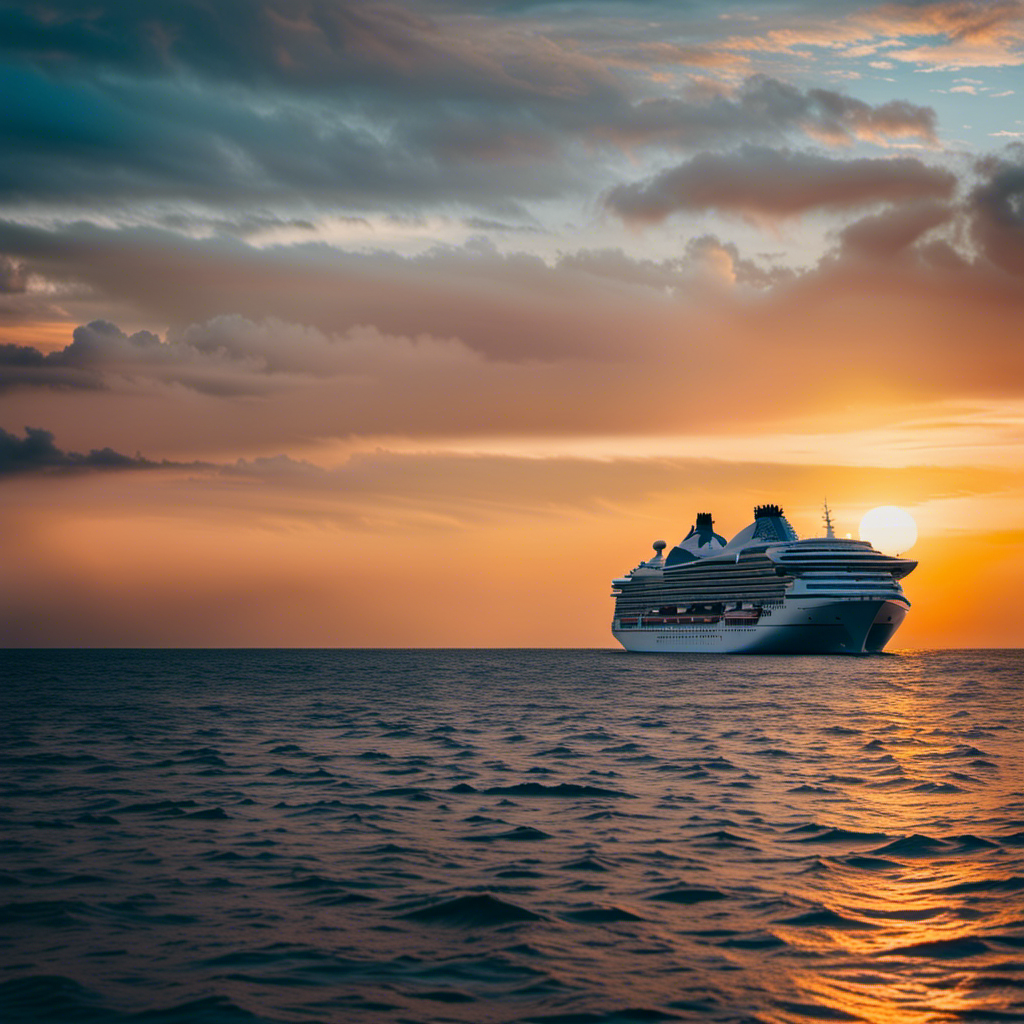I’m thrilled to share the extraordinary progress related to Royal Caribbean’s Icon-Class Ships. These exceptional vessels are set to revolutionize the maritime industry by leveraging the power of liquefied natural gas (LNG) and fuel cell technology.
Thanks to a partnership with shipbuilder Meyer Turku, these state-of-the-art ships will be delivered in 2022 and 2024, accommodating around 5,000 passengers.
By embracing clean and efficient power sources, Royal Caribbean is leading the charge in reducing emissions and transforming the industry.
Get ready for a new era of sustainable cruising on the high seas.
Key Takeaways
- Royal Caribbean’s Icon-Class Ships will introduce fuel-cell technology to reduce greenhouse-gas emissions.
- The ships will primarily run on liquefied natural gas (LNG), which is gaining momentum in the maritime industry.
- The use of fuel cells and LNG will result in cleaner emissions and contribute to energy efficiency.
- The adoption of LNG power by Royal Caribbean and other cruise lines is leading to growth in ports supporting LNG infrastructure.
The Future of Maritime Industry: Royal Caribbean’s Icon-Class Ships
I’m excited about the future of the maritime industry with Royal Caribbean’s Icon-Class ships. These ships are set to transform the industry with their clean power technology. They will introduce fuel-cell technology to reduce greenhouse gas emissions. Royal Caribbean has already signed a memorandum of understanding with shipbuilder Meyer Turku. The Icon-Class ships are expected to be delivered in 2022 and 2024.
These ships will have a significant environmental impact as they can accommodate approximately 5,000 passengers. Fuel cells produce no sulfur and reduce nitrogen oxides and particulates, making them a cleaner alternative for powering a ship’s hotel functions. This shift towards clean power and the adoption of liquefied natural gas (LNG) as the primary fuel source will not only benefit the environment but also lead to growth in ports supporting LNG infrastructure.
The future of the maritime industry is bright with these future innovations.
Revolutionary Technology: Fuel Cell Power on Icon-Class Ships
Fuel cell technology is being tested and maximized on Royal Caribbean’s new Icon-class ships, offering exciting design possibilities and reducing greenhouse-gas emissions.
-
Fuel cell technology implementation on Icon-class ships:
-
Memorandum of understanding signed with shipbuilder Meyer Turku
-
Testing fuel cell technology on existing Oasis-class ship in 2017
-
Progressively larger fuel cell projects planned for new Quantum-class ships
-
Benefits of fuel cell power:
-
Fuel cells produce no sulfur and reduce nitrogen oxides and particulates
-
Energy efficiency and reduced emissions
-
Fuel cells offer design possibilities for powering ship’s hotel functions
-
Impact on the maritime industry:
-
Fuel cells represent a significant step forward for the industry
-
Limited experiments with fuel cell technology in the past
-
LNG adoption leads to growth in ports supporting it
The implementation of fuel cell technology on Icon-class ships not only reduces greenhouse-gas emissions but also offers promising design possibilities. The memorandum of understanding with shipbuilder Meyer Turku and the testing of fuel cell technology on existing ships demonstrate Royal Caribbean’s commitment to incorporating this technology.
With fuel cells producing no sulfur and reducing nitrogen oxides and particulates, the benefits of fuel cell power include energy efficiency and reduced emissions. Additionally, fuel cells offer interesting design possibilities for powering the ship’s hotel functions.
This revolutionary technology represents a significant step forward for the maritime industry, and the adoption of LNG as a power source is further driving growth in ports supporting it.
A Cleaner Future: LNG Adoption in the Maritime Industry
LNG adoption is gaining momentum in the maritime industry, with other cruise lines also embracing this cleaner fuel source. The expansion of LNG infrastructure is a key driver behind this shift.
LNG, or liquefied natural gas, offers several environmental benefits compared to traditional fuels. It produces lower sulfur emissions and reduces nitrogen oxides and particulate matter. This results in cleaner emissions and contributes to improved air quality.
The adoption of LNG power by cruise lines, such as Royal Caribbean, is leading to the growth of ports that support this fuel source. Moreover, LNG can also be used in conjunction with distillate fuel for ports that do not have LNG infrastructure in place.
Overall, the industry’s move towards LNG adoption is a positive step towards a cleaner and more sustainable future for the maritime industry.
Setting a New Standard: Energy Efficiency and Reduced Emissions
Using advanced technologies like air lubrication and AEP scrubbers, we can significantly improve energy efficiency and reduce emissions in the maritime sector. This is crucial for achieving environmental sustainability and ensuring a cleaner future for our oceans.
Here are four key ways in which energy-saving technology can make a positive impact:
-
Reduced Friction: Air lubrication technology reduces friction by creating microscopic bubbles, allowing ships to glide through water more efficiently and consume less fuel.
-
Cleaner Exhaust: AEP scrubbers clean exhaust gases before they are released into the atmosphere, removing harmful pollutants and minimizing the environmental impact.
-
Improved Design: Energy-saving technologies like fuel cells offer exciting design possibilities for powering a ship’s hotel functions, reducing reliance on traditional fossil fuels.
-
Industry Transformation: By adopting these energy-saving technologies, the maritime industry can set a new standard for energy efficiency and reduced emissions, leading the way towards a more sustainable future.
Fuel Cell Breakthrough: Transforming the Maritime Industry
I’m excited about the breakthrough in fuel cell technology and its potential to revolutionize the way ships operate in the maritime sector.
Fuel cells offer numerous benefits, particularly in terms of environmental impact. They produce no sulfur and significantly reduce nitrogen oxides and particulates. This means cleaner emissions and a positive step forward for the industry.
Royal Caribbean, known for their progress in energy efficiency, is taking the lead in testing and maximizing the use of fuel cells in their Icon-class ships. These ships, expected to accommodate approximately 5,000 passengers, are powered by liquefied natural gas (LNG) and will also incorporate fuel cell technology. This represents an interesting design possibility for powering the ship’s hotel functions.
The adoption of LNG in the maritime industry is gaining momentum, leading to growth in ports that support it.
Overall, fuel cell technology has the potential to greatly transform the maritime industry and contribute to a more sustainable future.
Maximizing Efficiency: Fuel Cell Integration in Icon-Class Ships
Maximizing the efficiency of fuel cell integration in the Icon-class ships is a key focus for Royal Caribbean. With advancements in fuel cell technology, Royal Caribbean aims to harness the environmental benefits of fuel cells in the maritime industry. By incorporating fuel cells into their ships, Royal Caribbean is taking a significant step forward in reducing greenhouse gas emissions and improving sustainability in the industry.
Fuel cells offer interesting design possibilities for powering the ship’s hotel functions, such as lighting, air conditioning, and other electrical needs. The table below highlights the environmental benefits and advancements in fuel cell technology that are being utilized in the Icon-class ships:
| Advancements | Environmental Benefits |
|---|---|
| Reduced emissions of sulfur, nitrogen oxides, and particulates | Cleaner air quality |
| Potential for zero-emission operation | Reduced greenhouse gas emissions |
| Design flexibility for powering ship’s hotel functions | Improved energy efficiency |
Port Infrastructure Growth: The Impact of LNG Adoption
Adopting liquefied natural gas (LNG) as a power source in the maritime industry leads to the growth of ports supporting cleaner energy options. The economic benefits of LNG adoption are significant, as it provides infrastructure commitments for suppliers and encourages the development of port facilities. With the increasing adoption of LNG power in the maritime industry, ports are expanding their capabilities to accommodate these vessels. This growth in port infrastructure not only enhances the operational efficiency of LNG-powered ships but also creates new job opportunities and drives economic growth in the surrounding areas.
Furthermore, LNG adoption has a positive environmental impact by reducing emissions in the maritime industry. LNG produces lower levels of sulfur, nitrogen oxides, and particulates compared to traditional fuels. This reduction in emissions contributes to improving air quality and mitigating the industry’s impact on climate change. As more ships transition to LNG, the overall environmental footprint of the maritime industry decreases, making it a more sustainable and responsible choice for transportation at sea.
Design Possibilities: Fuel Cells Powering Icon-Class Ships’ Functions
Fuel cells offer exciting design possibilities for powering various functions on the Icon-Class ships. The integration of fuel cells in these ships opens up new opportunities for energy efficiency and reduced emissions. Here are four key points to consider:
-
Enhanced Sustainability: Fuel cells produce no sulfur and significantly reduce nitrogen oxides and particulate emissions. This makes them a cleaner and more sustainable option for powering the ship’s hotel functions.
-
Versatile Power Source: Fuel cells can be used to power a range of functions on board, including lighting, heating, and ventilation systems. Their compact size and quiet operation make them ideal for integration into various ship systems.
-
Design Flexibility: The use of fuel cells allows for more flexible design options, as they can be installed in different areas of the ship. This ensures efficient use of space and enhances the overall design aesthetic.
-
Future Potential: By testing and maximizing the use of fuel cells in the Icon-Class ships, Royal Caribbean is paving the way for the wider adoption of this technology in the maritime industry. This could lead to significant advancements in clean power at sea.
Overall, the integration of fuel cells in the Icon-Class ships offers not only environmental benefits but also exciting design possibilities for a more sustainable future in the maritime industry.
Frequently Asked Questions
What Is the Expected Passenger Capacity of Royal Caribbean’s Icon-Class Ships?
The expected passenger capacity of Royal Caribbean’s Icon-Class ships is approximately 5,000. These ships will also have unique design features, including the use of fuel cell technology and the ability to run on LNG or distillate fuel.
When Are the Icon-Class Ships Scheduled to Be Delivered?
The Icon-class ships are scheduled to be delivered in 2022 and 2024. These ships are expected to accommodate approximately 5,000 passengers and will feature fuel-cell technology to reduce greenhouse-gas emissions.
Are Other Cruise Lines Also Adopting LNG Power?
Yes, other cruise lines are also adopting LNG power. LNG is gaining momentum in the maritime industry due to its infrastructure commitments for suppliers. It is expected that the Icon-class ships will primarily run on LNG.
What Are Some Technologies Used by Royal Caribbean to Improve Energy Efficiency and Reduce Emissions?
Some energy efficient systems used by Royal Caribbean to reduce emissions include air lubrication and AEP scrubbers. These technologies, along with sustainable propulsion methods like LNG, contribute to cleaner emissions and a more sustainable maritime industry.
How Do Fuel Cells Reduce Greenhouse Gas Emissions and Improve Air Quality?
Fuel cells reduce greenhouse gas emissions and improve air quality by producing no sulfur, reducing nitrogen oxides and particulates. They offer design possibilities for powering a ship’s hotel functions, maximizing their use in the maritime industry.
Claire, a creative soul with an unquenchable thirst for storytelling, is an integral part of the Voyager Info team. As a dedicated writer, she weaves captivating narratives that transport readers to enchanting cruise destinations and beyond.
Claire’s love affair with writing began at an early age when she discovered the magic of words and their ability to craft worlds and emotions. Her innate curiosity led her to explore various literary genres, but it was travel writing that truly captured her heart. Drawing inspiration from her own globetrotting adventures and encounters with diverse cultures, Claire embarked on a journey to become a travel writer par excellence.










